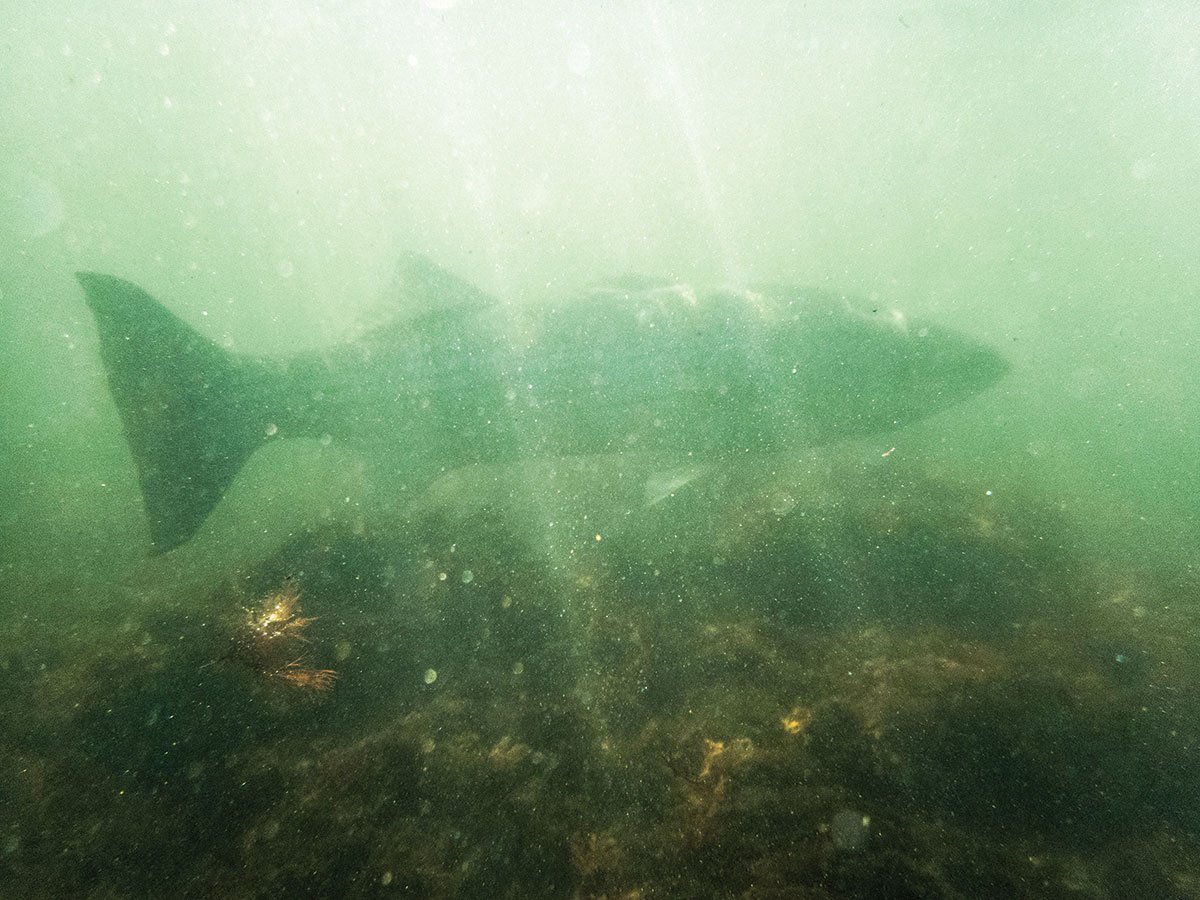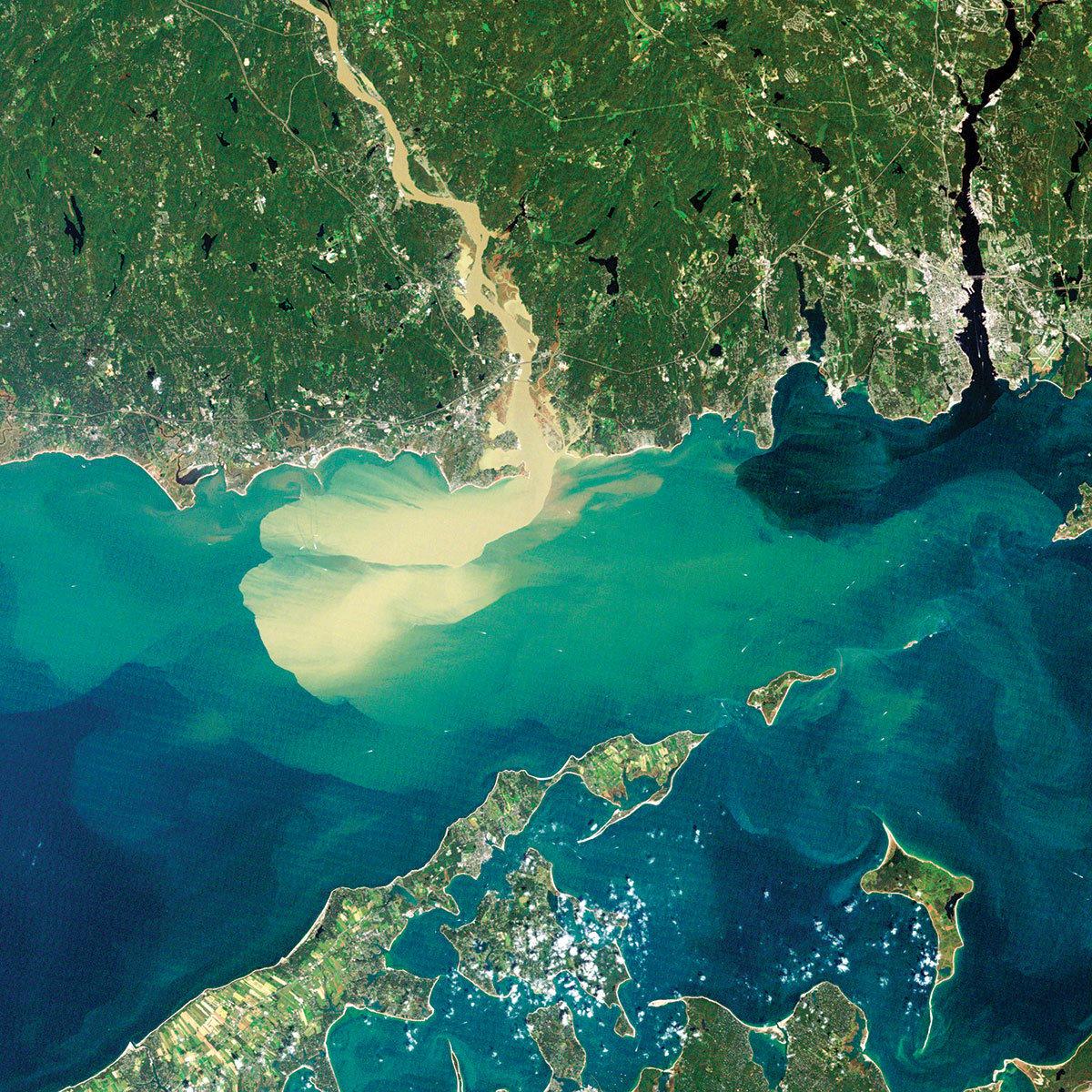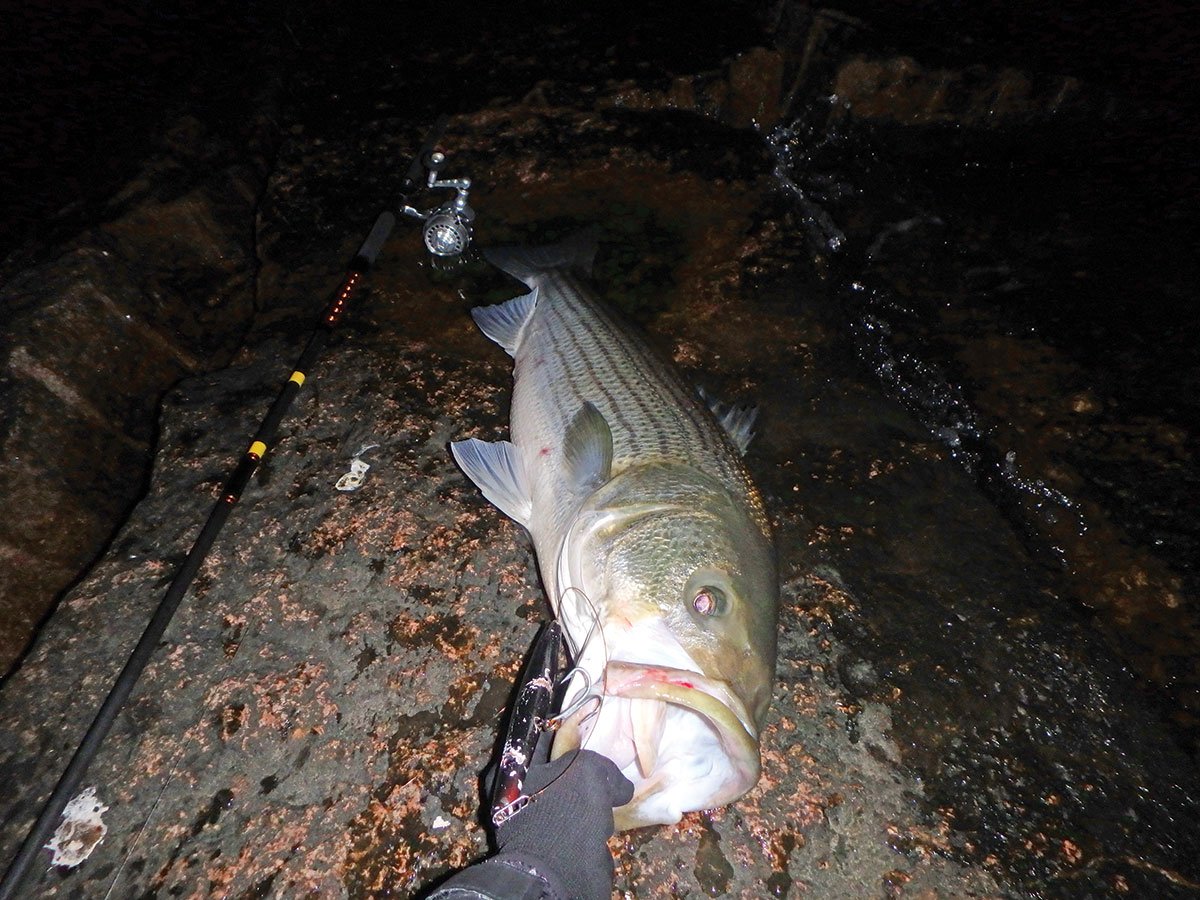
Tips, tricks and thoughts on finding success when weed and sand clog the surf.

Perhaps one of the most frequently-asked questions I receive here at The Fisherman Magazine relates to surf fishing in dirty water. From inquiries asking if I know if the water at “location X” is clean enough to fish yet after a big blow, to how to deal with dirty water in general, the emails come in almost weekly. I have even had several readers contact me to say that a certain writer has stated, as a point of fact, that you cannot fish for X number of days following a storm as the water is too dirty and the silt and weed will clog a fish’s gills and suffocate them. I can’t help but laugh at this one.
In any event, my usual answer simply urges anglers to get out and see for themselves, but I easily understand the uncertainty. Often I point them to the videos and articles written by Mike Laptew and have them not just take note of the fish he photographs, but also the conditions of the water surrounding the fish. Mike mentions many times in his work that dirty water not only holds striped bass, but it seems that they almost prefer to hunt and feed in it. I mean, it makes sense as it adds another level of cover under which they can hide and better ambush that next meal, especially during the day.
For quite a long time I had a misunderstanding of fishing dirty water and even passed on some nights where now I’d be psyched to fish, so I am by no means immune to this mistake; here’s a look at how I handle fishing in dirty water.
It’s probably best to begin by defining what I mean by dirty water. This term can encompass many aspects from sand to mud to weeds and so-on and really includes just about any sort of suspended material. Some forms of “dirt” can make for a very frustrating outing while others are quite easy to combat. Knowing what causes each type of suspended material and when to expect it is the key to combatting it.
In the open ocean you’re not too likely to encounter true mud in the water unless you fish in close proximity to a large river. Back when Hurricane Irene hammered the coast in the summer of 2011, some very cool satellite images began to circulate that showed the flood waters of the Connecticut River dumping into Long Island Sound (see the image) producing a distinct brown patch surround by standard blueish-green ocean water. While this is an extreme example, it shows that mud can find its way into the salt. A similar scenario occurs around coastal islands like Block Island where heavy rains can produce a mud line surrounding the island like a ring. Heavy rain washes the clay from the cliffs, deposits it on the beach and it’s pushed out to sea by wind and wave activity. I’m sure this problem can also raise its head in places where expansive mud flats feed creeks that dump into the ocean.
More common in the salt, however, is silty water often caused by heavy wave activity. This can occur at any time the surf is up, but a big storm is the most common cause. This silty water looks anywhere from white to tan, and many surf fishermen perceive this as water a striped bass cannot inhabit—they are wrong! While you’ll mostly find silty water on sandy beaches, it can also happen along rocky shoreline so long as there is sand nearby. The sand can enter the water column a distance offshore and move in with the wind or current, or it can be brought down the shoreline by running currents pulling sand as it goes.
The other version of dirty water relates to suspended weed. Much like silty water, this can be caused by heavy surf, but a very high tide can also be the culprit. I have also been told that heavy near-shore dragger activity can add seaweed to the surf. Now I don’t know enough about the actual practices of draggers to confirm or deny this one, yet many hold this to be a fact and it could explain weedy conditions when no other obvious culprit exist.
Red weed or “mung” is perhaps the most difficult to fish through as it has a way of getting wrapped in your lure, embedded in your snap or swivel and can even be cranked into your spool as it clings to line, but it, too, can be overcome. Where I fish a hard southwest wind often brings the mung to shore from about mid-summer into the fall, but your locale can be different.
Other forms of seaweed like eelgrass or bubbleweed often finds its way into the water after a big surf or extremely high tide. Sand or silt is common after a big surf as well, and mud can find its way into the surf by heavy rains and flooding.
While wave activity beats on the rocks and dislodges vegetation, a high tide can reach high enough onto the shoreline to float past deposits of dead seaweed and carry it seaward. Many times I have arrived at the surf for high tide only to find way more weed than I had anticipated, likely due to this high-water culprit. What’s good about this scenario is that the weed is often short-lived and you can generally wait it out and cleaner water will develop with the dropping tide. In the meantime you can either try to fish through it, grab a nap or head elsewhere and return closer to low slack.

Ok, so enough about what causes dirty water, what about dealing with it? Well, the first thing you can do to lessen the madness is to eliminate hooks. When fishing an outflow and I encounter suspended weed, I immediately reach for a bucktail or rubber shad/jig combo. The single hook is still going to catch some weed, but having a single point in line with your leader is going to accumulate far less debris than say, a plug with two or three treble hooks dangling below at all different angles.
When a bucktail isn’t the best choice for a given spot, simply using a lure with fewer hooks can help to keep clean in the same manner as the jig (fewer hook points) and it has the added benefit of making releases safer and easier on both angler and fish (check back to my June 2019 article Reducing Mortality: A Case For One, for a thorough look at how I make this modification work.). Another trick with artificials that works sometimes is to try to stay above the weed. By this I mean throwing a topwater like a spook or popper by day or a surface Danny by night. While there are plenty of times where the weed is on the surface, usually with bubble weed or eel grass, if it’s suspended then you can sometimes sneak over the top and stay clean long enough for a fish to strike.
Another option, similar to the idea behind throwing a jig, is to use a long, slender soft plastic on a lightweight jighead. In the past I’ve thrown softies like the Hogy and Slug-Go with great success, but this year the 13-inch Gravity Tackle GT Eel has become a staple in my bag. While it produces well under normal conditions, it has literally saved several nights for me when suspended eel grass fouled every plug in my bag. The bass either didn’t notice the eel grass on the bait as it kind of blends in with it or I didn’t pick up enough to make the lure look unnatural.
Speaking of natural, live bait is another great way to combat both dirty and weedy water! When the surf is churned up and dirty or muddy, my first inclination is to go net some fresh bunker to chunk. I find that both the scent of the chunks and the fact that they stay in one place as opposed to being dragged through the water combine to produce some fantastic results. Live eels can also produce under these circumstances; my thought here is that the bass are a little more willing to ignore that piece of weed on the hook as the prey is alive and kicking, and the scent of the natural offering is easier to track down in the dirty water.
The last trick I use to combat weed is to put a sacrificial lure (teaser) ahead of my leader. While I rarely use a leader under normal circumstances, adding that hook 4 to 5 feet ahead of the main lure might be just enough to “clean” the water as you make your retrieve.
Color choice is a good way to combat silt or mud. The first time I really began to think about how to deal with fishing in dirty water by way of plug color choice was many years ago when the spring run on the Connecticut River was still very good. Flooding caused by snow melt to the north combined with annual spring rains would often raise the water levels by many feet in a few hours, and with it often came very muddy water. My original solution was to combat this by throwing bright pink lures; the accepted idea was that the pink stood out well against the mud. What I found was that this seemed fine by day, but at night the pink plugs disappeared rather quickly (at least to my eyes above the water’s surface) but it worked well enough for me not to seek an alternative. Then one night I packed my usual array of plug colors for a dark night (black, blurple and gold chrome), and a pop-up rainstorm on my way to the river brought unexpected mud to the evening’s outing. Lacking any pink swimmers, I threw my standard black Red Fin and cleaned up while my partner only did moderately well on his pink plugs. It quickly became apparent to me that the black lure stood out extremely well against the mud background and to this day remains my go-to muddy water color.
I would like to say here that I am by no means the first person to combat mud in this way as over the years I have come to learn that sharpies have been doing this for longer than I have been at the game; I was just a little slow to join the party.
While none of these options is perfect, quite often one of them will get the job done on a given night; the key is often trying something until you figure out what works. When all else fails, you can hunt for clean, or perhaps cleaner, water. Many times I have found that simply locating an area where the water is a few degrees cleaner than the surrounding water will put me on the fish. Be sure to fish any hard lines of water clarity you encounter, especially when fishing muddy water, as this is about as close as we have to a sure thing in the surf!



